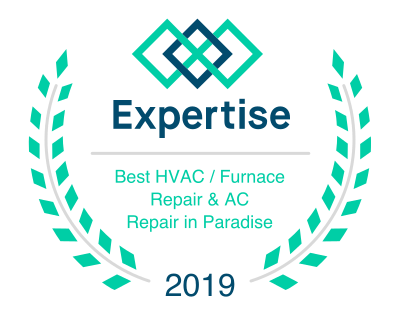HVAC maintenance is something many people either forget to do or try to avoid spending money on. Those who are diligent about it may not understand what it involves. They simply trust that when the HVAC technician arrives on a service call, all will be well with the HVAC system once they leave.
Many HVAC companies offer a maintenance service, although the number of tasks conducted during a tune-up may differ from company to company. Lower-priced maintenance plans usually mean fewer tasks are covered. In general, there are certain standard tasks that your HVAC technician should do during a tune-up. This guide explains what an HVAC technician does on a service call.
What Does An HVAC Tech Do During a Tune-up?
All homeowners should have a basic grasp of what an HVAC technician does during a tune-up. If don’t know what a tune-up includes, a sneaky HVAC technician may try to take advantage of your lack of knowledge by skipping tasks and doing the bare minimum. Here’s what to expect from the technician during an HVAC tune-up.
Conduct a visual inspection
The first thing the technician will do is cast their eye around to spot any noticeable problems with the unit. They’ll be on the lookout for the following:
- Any visible signs of wear and tear.
- Dirt or debris on or around the AC outdoor unit. They’ll also look through the fan guard to see if the fan is turning freely and strongly.
- Puddles of water near the outdoor unit.
- Dirt that has accumulated on the condenser coils. A build-up of dirt on the coils acts as unwanted insulation that prevents the transfer of energy required to cool the air. As a result, the whole system has to work harder to try to cool the house.
- A clogged air filter.
- Ice build-up on the evaporator coils.
- Cracks or rust on the furnace’s heat exchanger.
- Frayed electrical wires or loose connections.
Check refrigerant
If your AC isn’t blowing cold air, the first thing that the technician may check is the refrigerant level. An AC that’s low on refrigerant will not blow cold air. The refrigerant passes over the evaporator coils where it absorbs heat from the air. After the heat has been removed, what remains is the refreshing cold air that flows into your home. Without refrigerant, this process cannot take place.
Recharging refrigerant is not included in the price of a tune-up. If the refrigerant is low, the technician will inform you of the extra cost and, with your permission, refill it to the correct levels, taking care not to overfill it. Overfilling refrigerant leads to excess refrigerant collecting in the compressor that can seriously damage it. This is why recharging refrigerant is a job for the pros and you shouldn’t do it yourself.
Check and flush the condensate drain line
Refrigerant gas cools when it changes from a gas vapor into a liquid as it passes through the evaporator. The condensate line removes the excess moisture from the indoor evaporator unit and deposits it outside. This is why you see a light drip near the outdoor unit.
When the condensate line becomes blocked, fluid can’t drain and the condensate pan starts to collect water. This stagnant water, left unchecked, can overflow, increase humidity levels, and lead to the growth of algae and mold, all of which can compromise your home’s air quality.
If the technician discovers a clogged condensate drain line, they will inform you that they need to flush out the line and clean the drain pan to restore normal HVAC functioning. This is a separate service and not part of a tune-up.
Check blower belts
In HVAC systems that are belt-driving, the technician should check the condition of the blower belts and pulleys. AC belts wear with age and can become hard and cracked or lose tension. This can lead to problems such as frozen coils or reduced airflow.
HVAC belts are durable and can last for many years. If, however, both the AC and furnace use a single blower motor or you use your HVAC system daily, they can wear out sooner. The technician should check the belt and replace it if it shows signs of deterioration.
Lubricate moving parts
HVAC systems contain moving parts in compressors, circulation units, and furnaces. Parts like the motor bearings, fan motors, and shafts need to be oiled regularly to keep them functioning at their best.
A lack of lubrication increases friction in these parts. This friction will cause these parts to wear out much faster. As they wear, you’ll notice a drop in your HVAC system’s efficiency. If parts need oiling, the technician will first clean off dirt and greasy grit before applying lubrication.
Inspect the condenser fan motor
Condensing fan motors are one of the hardest working parts of an air conditioner. When they fail, your AC won’t work. This is the last thing you want on a hot day in Las Vegas. On a routine maintenance call, the technician will start up the AC to listen for any unusual noises. For instance, a buzzing noise coming from the condenser unit can indicate that the fan motor may be nearing the end of its life or is in need of repairs. Fixing the problem before the motor fails means you won’t be stuck without cold air during summer.
Inspect electrical wiring and tighten connections
Without electricity, your HVAC system can’t run. Electrical repairs require specialized training. For your own safety, don’t try to do any electrical work yourself. The technician will do the following:
- Check for frayed or exposed wires and tighten loose connections.
- Examine the contactors for burned or pitted contacts.
- Test relays. If a relay is faulty or stuck in the open position, it won’t be able to send electricity to the compressor to start the air conditioner.
- Check the system’s voltage output and motor amperages.
- Check the circuit breaker and fuses.
Examine the capacitor
Capacitors play a vital role in starting an air conditioner. They provide a burst of energy that kick starts the fan motor. When the capacitor fails, your AC won’t start. If your AC stutters when turning on or it turns on and off intermittently, this can be a sign that the capacitor is starting to fail. Your HVAC technician should always Inspect the capacitor for signs of wear. A faulty capacitor can place a strain on the air conditioner, causing further damage to the HVAC unit.
Check the condition of the furnace
After sitting idle all summer, your furnace may have some surprise problems lying in wait when winter comes along. It’s advisable to give your furnace a check-up before winter, not only to make sure everything is functioning but also for safety. The technician will check the safety controls, clean around the pilot burner and, if possible, repair any minor problems on the spot.
If you have a gas furnace, then the fuel lines and connections that supply gas to your furnace needs regular inspection. If there is a gas leak, it presents a safety hazard. Leaking gas can cause an explosion and the carbon monoxide released can be fatal when inhaled.
Furnace tune-ups keep the unit functioning efficiently and safely. If a furnace isn’t regularly cleaned, soot can accumulate in burners and chimneys affecting heating efficiency. Cracked heat exchangers can reduce the amount of heat that flows into your house.
The technician should check the exhaust outlet, chimney flue, vent stack, and look for signs of corrosion and backdraft. The exhaust outlet allows carbon monoxide gas to flow out of the property. If the exhaust outlet is blocked, gas can’t escape and will build up to dangerous levels.
If you have an electric furnace, the technician will check for electrical hazards that can spark a fire. Whether gas or electric, fixing a furnace is best left to a trained technician who knows how to safely work with volatile fuels and electrical wiring.
Check the thermostat
A faulty thermostat can cause the AC to not start or to run continuously and lead to uneven temperatures throughout the house. When the AC malfunctions, most people don’t think that the thermostat could be the culprit. Many don’t even realize that the temperature on the thermostat isn’t matching the actual room temperature. A problem with the thermostat may not occur to you but, fortunately, it is on your HVAC technician’s checklist when doing routine maintenance.
If the temperature on the thermostat seems way off from the actual room temperature, the technician will determine whether it’s due to a faulty thermostat or caused by another problem elsewhere in the system. If trying to fix the thermostat doesn’t work and nothing else appears to be wrong, then it’s likely that the thermostat needs replacing.
Replace worn or damaged parts
If the technician notices any worn or damaged parts while performing their duties, they should inform you and suggest an immediate replacement. It’s only a matter of time before a worn part fails. In the meantime, it affects the unit’s efficiency leading to lower comfort levels and higher energy bills.
Check for leaks and dirt in the ductwork
If it’s included in your maintenance plan, the technician will do a quick inspection of the ductwork to check for leaks and dirt build-up. If the ducts are dirty, it can reduce airflow. It also means dirt, dust, and bacteria are blowing into your home and contaminating the air you breathe. Duct cleaning isn’t part of a routine tune-up. If ducts are dirty the technician will suggest scheduling a duct cleaning appointment.
Do a final system check
Once all inspections, adjustments, and repairs have been done, the technician will turn on the system to check that everything is running smoothly. They will also let you know if there are any other problems that will need to be addressed separately. In the course of their work, other issues may come to light such as poor ventilation or excessively dry air that may be causing damage to the home. They may recommend ways to improve air quality, such as installing a humidifier or whole-house ventilation system.
Benefits of an HVAC Tune-up
It’s worthwhile signing up for a maintenance plan with your HVAC contractor. Preventative HVAC maintenance helps avoid many problems and offers the following benefits:
- Keeps your home comfortable and avoids untimely HVAC breakdowns.
- Lowers your energy bill. When your HVAC functions at an optimal level, it uses less electricity.
- Keeps HVAC repairs to a minimum and helps identify problems before they lead to bigger and more expensive problems.
- Extends the lifespan of your HVAC system.
To keep your HVAC system running smoothly all year, we advise seasonal tune-ups — an AC tune-up before summer and a furnace check at the start of winter. For HVAC maintenance in Las Vegas, call The Cooling Company at (702) 567-0707.. HVAC tune-ups don’t have to take a long time. If there are no serious problems, a standard HVAC tune-up should take no more than an hour to complete.












